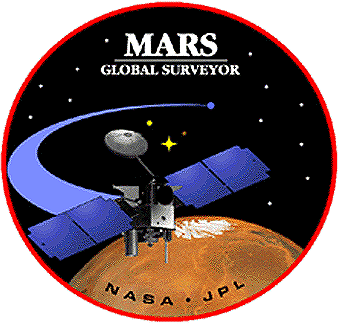

All six science instruments comprising the scientific payload of NASA's new Mars Global Surveyor (MGS) orbiter have been integrated on the nearly complete spacecraft, which is in development at Lockheed Martin Astronautics Corp.'s Denver facility.
The last of the instruments-- the thermal emission spectrometer --arrived at Lockheed Martin on May 28, completing Mars Global Surveyor's suite of equipment to study the surface, atmosphere and interior of Mars over a full Martian year, the equivalent of about 687 Earth days.
"The instruments have been installed on the payload platform and have undergone initial power-on testing to make sure all of the electrical connections are working," said Glenn Cunningham, Mars Global Surveyor project manager at NASA's Jet Propulsion Laboratory. "The spacecraft has been moved from the assembly area to Lockheed Martin's Space Simulation Laboratory, where environmental qualification testing will be completed."
During this phase of testing, MGS is being subjected to simulations of the harsh conditions of launch, Cunningham said. After completing those tests, the spacecraft will undergo two weeks of testing in simulations that will replicate the environment of space-- extremely cold temperatures and illumination on one side of the spacecraft by the Sun-- to assure that MGS's temperature control design is adequate for its 10-month journey to Mars and two years in orbit around the planet.
Mars Global Surveyor carries six of the eight instruments that were flown on the Mars Observer spacecraft, which was lost in August 1993. The instruments include: the thermal emission spectrometer; a laser altimeter, which will measure the height of martian surface features; and a magnetometer and electron reflectometer, which will search for evidence of current and ancient magnetic fields.
Also onboard the spacecraft are a camera that will take high resolution photographs of the planet and provide daily global weather maps, and an ultra stable oscillator that will be used along with MGS's telecommunications system to map variations in the gravity field of Mars and study its atmosphere. Mars Global Surveyor also will carry a Mars relay radio system that will be used to support the Russian Mars '96 mission, planned for launch in November 1996.
Of the six science instruments onboard the spacecraft, four-- the camera, laser altimeter, electron reflectometer and thermal emission spectrometer-- will be carried on the spacecraft's nadir panel, along with the relay system. Mars Global Surveyor will orbit the planet in a low altitude, nearly circular orbit over the poles of the planet, keeping its nadir panel continuously pointed at the surface. The spacecraft will complete one orbit around Mars about every two hours.
Mars Global Surveyor will be shipped from Denver to Cape Canaveral, Florida, in mid-August, where it will be fueled, integrated with the third stage booster of a Delta II expendable launch vehicle and readied for launch on November 6.
Mars Global Surveyor will arrive at Mars in September 1997 and spend approximately five months aerobraking through the martian atmosphere to lower itself into the final mapping orbit. Global mapping operations will begin in early 1998, allowing scientists to obtain the first extensive record of Mars' surface, atmosphere and interior.